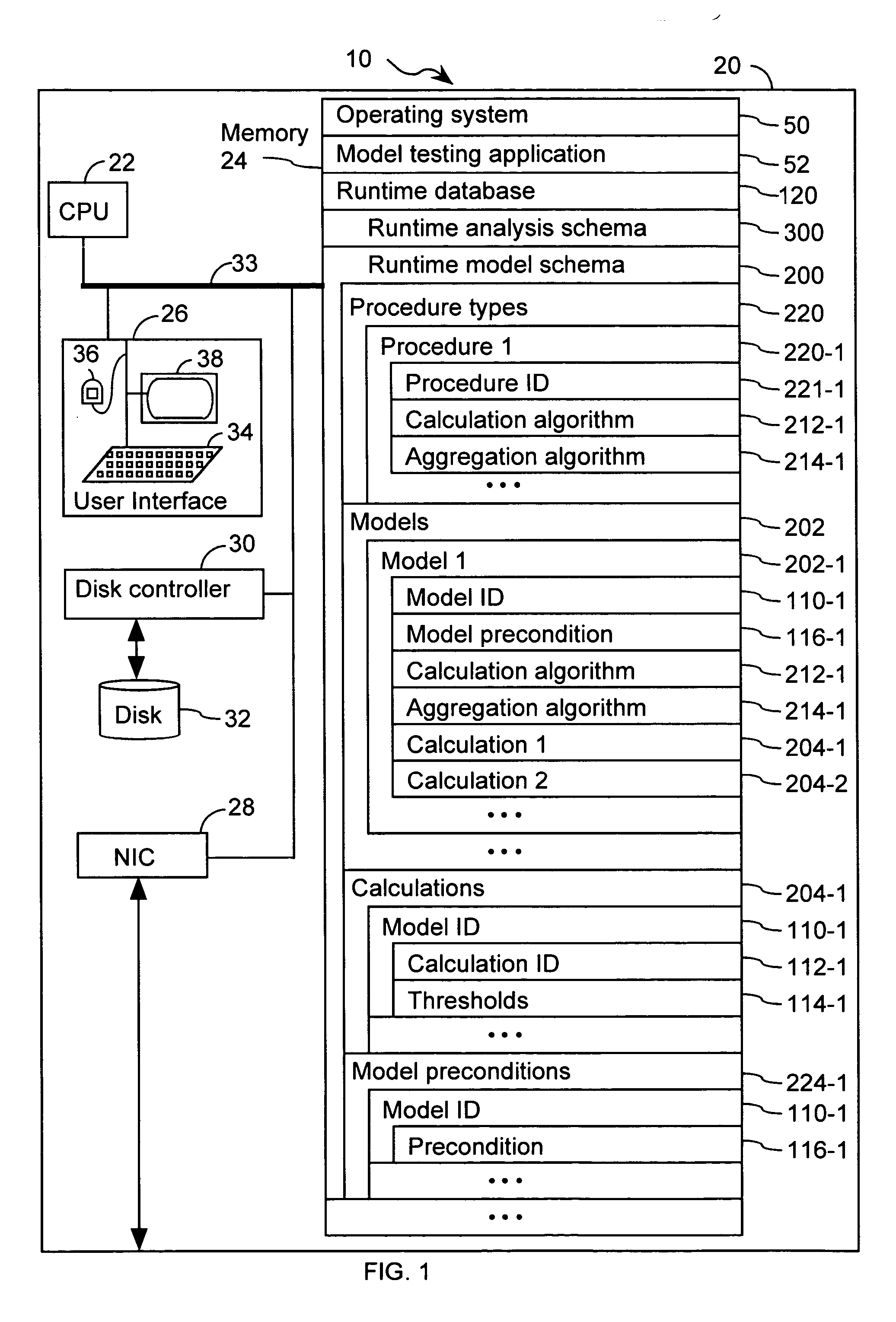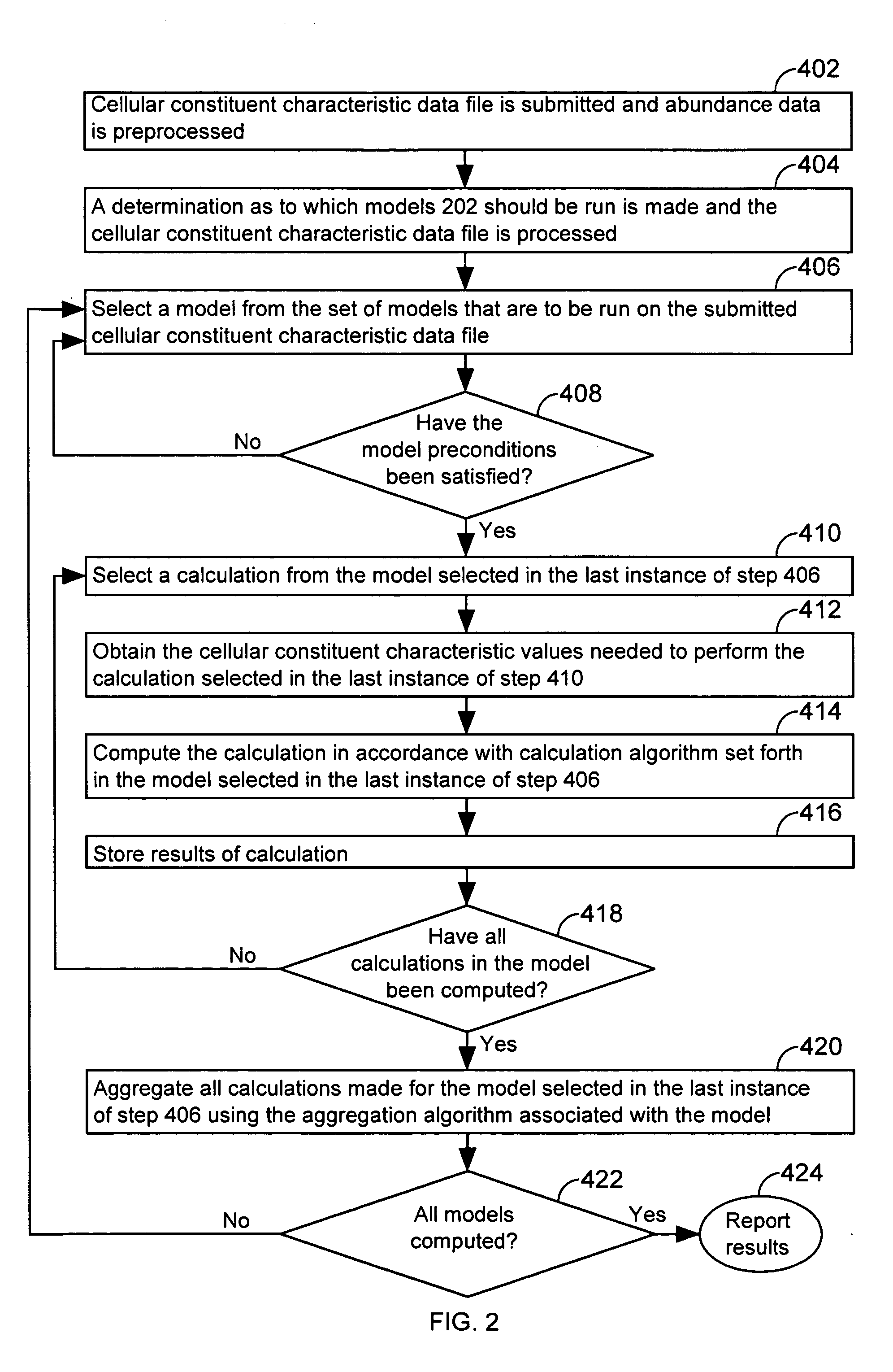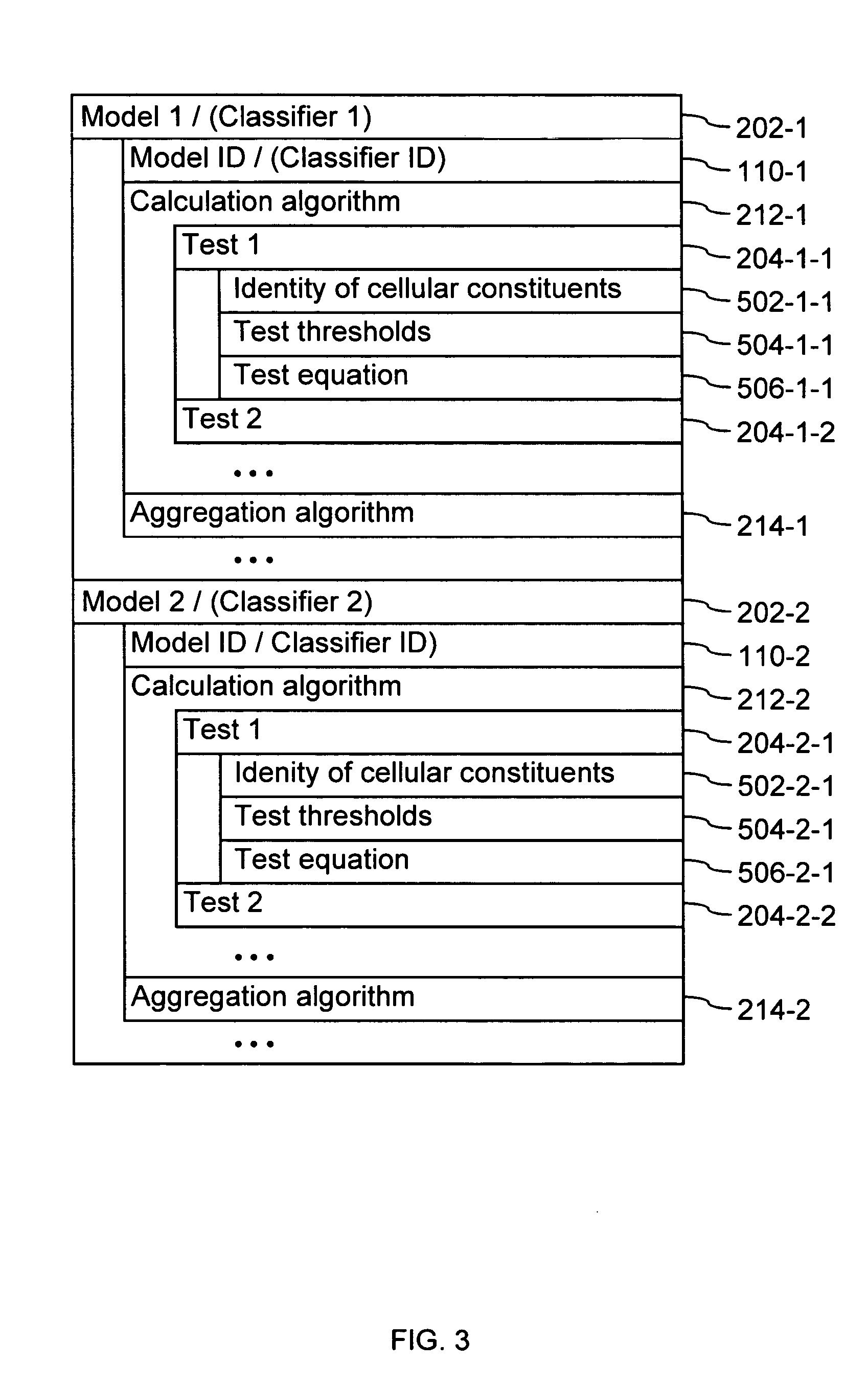Systems and methods for detecting biological features
a biological feature and computer technology, applied in the field of computer systems and methods for identifying biological features, can solve the problems of poor predictiveness of indicators, patients later developing clinical metastases, and treatment often having toxic side effects
- Summary
- Abstract
- Description
- Claims
- Application Information
AI Technical Summary
Benefits of technology
Problems solved by technology
Method used
Image
Examples
Embodiment Construction
FIG. 1 illustrates a system 10 that is operated in accordance with one embodiment of the present invention. FIG. 3 illustrate data structures that are useful for storing data used in the present invention. FIG. 2 illustrates processing steps used to test a plurality of models in accordance with one embodiment of the present invention. Using the processing steps outlined in FIG. 2, such models are capable of determining whether a specimen has one or more biological features. These figures will be referenced in this section in order to disclose the advantages and features of the present invention. Representative biological features are disclosed in Section 5.4, below.
System 10 comprises at least one computer 20 (FIG. 1). Computer 20 comprises standard components including a central processing unit 22, memory 24 for storing program modules and data structures, user input / output device 26, a network interface card 28 for coupling computer 20 to other computers in system 10 or other com...
PUM
| Property | Measurement | Unit |
|---|---|---|
| wide area | aaaaa | aaaaa |
| wide area network | aaaaa | aaaaa |
| tandem mass spectrometry | aaaaa | aaaaa |
Abstract
Description
Claims
Application Information
 Login to View More
Login to View More - R&D
- Intellectual Property
- Life Sciences
- Materials
- Tech Scout
- Unparalleled Data Quality
- Higher Quality Content
- 60% Fewer Hallucinations
Browse by: Latest US Patents, China's latest patents, Technical Efficacy Thesaurus, Application Domain, Technology Topic, Popular Technical Reports.
© 2025 PatSnap. All rights reserved.Legal|Privacy policy|Modern Slavery Act Transparency Statement|Sitemap|About US| Contact US: help@patsnap.com



